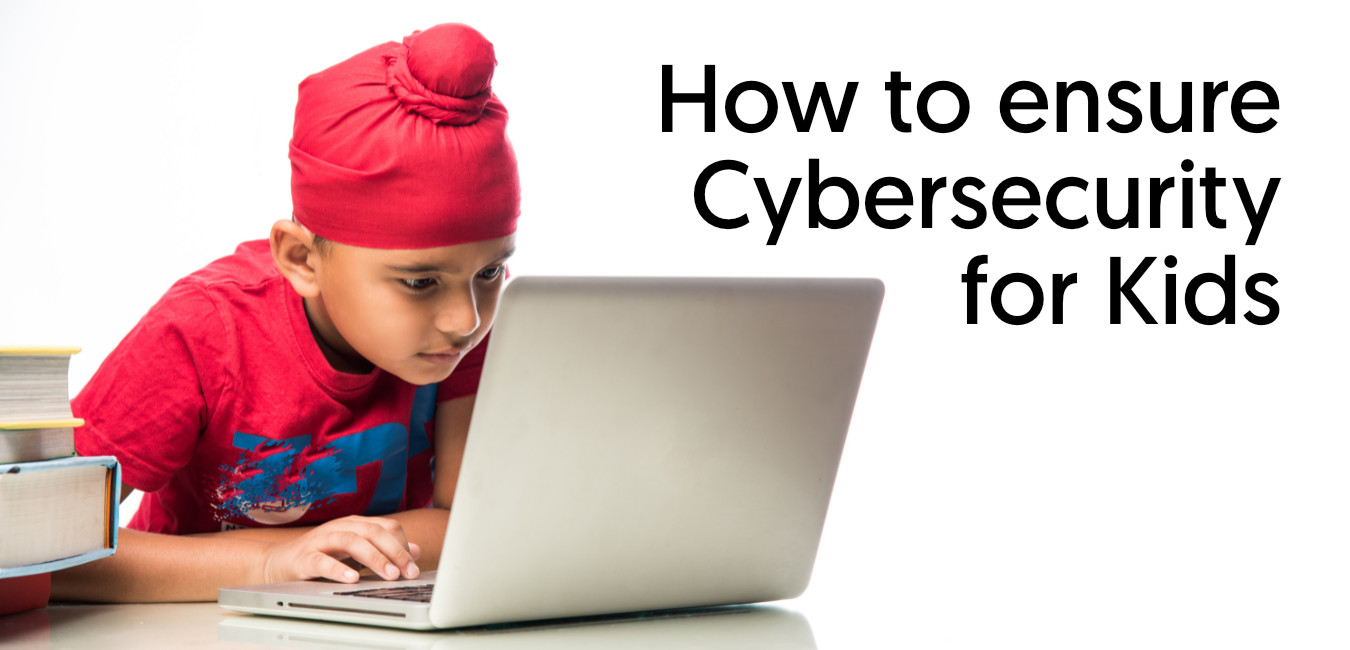Cybersecurity for Kids - How to Ensure Your Child Stays Safe Online

While the internet offers countless educational and recreational opportunities, it also presents significant risks to children’s cybersecurity. Parents and caregivers must take proactive steps to ensure their child’s safety in the online world. This article provides you with cybersecurity tips to ensure your child’s safety.
At The HDFC School, we have a strong focus on teaching kids about technology and the online world. Being a part of The HDFC Group that operates India’s largest private sector bank, we take online safety very, very seriously. As part of ensuring that kids learn to use the internet safely, we regularly conduct events that help our students stay aware of the various risks that they may face. We regularly conduct sessions on Cyber Hygiene and Security. One such event happened recently with Mr. Karthik Rao, a technologist with an interest in public policy and working as the Centre Head of CySecK, the K-tech Centre of Excellence in Cyber Security, Govt. of Karnataka. You can read about the seminar here - Cybersecurity Awareness for Kids. At another cybersecurity seminar organised at our Gurugram campus, renowned cyber security expert Mr. Rakshit Tandon spoke about the different types of cybercrime and the importance of developing cyber resilience in children. This attention towards students’ growth and holistic development has helped us consistently rank among the best schools in Bengaluru, Pune and Gurugram.
Here are the best tips on how children can stay secure on the internet.
Start with Education
Before diving into the technical aspects of cybersecurity, it's essential to educate both yourself and your child about online safety. Here are some key points to cover:
- Age-Appropriate Conversations: Base your discussions about online safety according to your child’s age and maturity level. Younger children may need more basic information, while teenagers can be taught about more complex topics.
- Encountering Cyberbullying: Teach your child about cyberbullying, its signs, and how to respond if they encounter it.
- Stranger Danger: Emphasise the importance of not sharing personal information online or communicating with strangers.
- Privacy Settings: Explain the significance of privacy settings on social media platforms and other online services.
Set Up Parental Controls
Parental control software allows you to monitor and limit your child's online activities, ensuring a safer online experience. It is highly recommended to use parental controls because of its benefits, such as:
- Content Filtering: Block or restrict your child’s access to inappropriate websites, content, and apps.
- Screen Time Management: Prevent your child from excessively using the internet, and instead encourage a healthy balance between online and offline activities.
- App Restrictions: Control which apps your child can download and use to prevent them from accessing potentially harmful apps.
- Monitoring: Monitor your child's online activity, including websites visited, search queries, and social media interactions.
Use Secure Devices
Ensuring the security of your child's devices is crucial for protecting their online presence. Here's what you can do:
While an antivirus software will probably warn you in some way if a website is not safe to browse, it’s still good to teach your child the difference between a secure website and one which is not secure. Teach your child to look for the “padlock” in the address bar of the browser when visiting websites and only continue browsing if the padlock is there. If the address bar says “Not secure” as shown below, encourage them to not browse that website.


Social Media and Online Etiquette
As technology becomes increasingly accessible, children are now more active on social media platforms. It has become essential to educate them about proper online etiquette and responsible use of social media.
- Privacy Settings: Adjust privacy settings on social media platforms to control who can see your child's posts and personal information.
- Reputation Management: Explain how online actions can impact their real-world reputation, college admissions, and job prospects. Encourage them to be very careful about their activities on social media.
Open Communication
Maintaining an open and honest line of communication with your child is one of the most effective ways to ensure their cybersecurity:
- Encourage Questions: Create an environment where your child feels comfortable asking questions or sharing concerns about their online experiences.
- Discuss Online Experiences: Regularly discuss what your child encounters online, both positive and negative, and provide guidance and support.
- Reporting Suspicious Activity: Teach your child to recognise and report any suspicious or inappropriate online interactions to you.
Teach Critical Thinking
Empower your child with critical thinking skills to help them navigate the online world safely:
- Fact-Checking: Show them how to verify information online and distinguish between reliable sources and misinformation.
- Critical Assessment: Encourage them to question the intentions of websites, ads, and messages they encounter online.
- Online Friendships: Advise your child to be cautious when making online friends and to avoid sharing personal information with strangers.
Conclusion
By educating both yourself and your child, implementing parental controls, securing devices, promoting responsible online behaviour, maintaining open communication, and teaching critical thinking skills, you can create a safer online environment for your child. Remember that ongoing guidance and support are key to helping your child navigate the digital world with confidence and security.
Did you like this post? We have more relevant content for parents to help them see the best version of their child:
8 Effective Ways to Motivate Your Child to Study
8 Engaging Ways to Improve Your Child's Vocabulary
8 Effective Ways to Help Your Child Get the Best Education
How to Teach Problem-Solving Skills to Your Child?
Private School vs Public School - Which is the Best for Your Child?
CBSE vs ICSE: Which is Better for Your Child?
How to Choose the Right School for Your Child?
